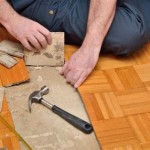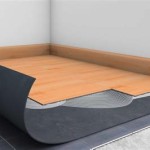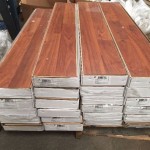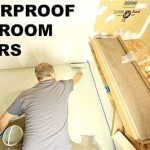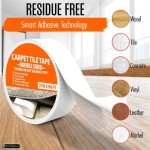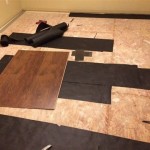Essential Aspects of Sealing a Bathroom Subfloor
Ensuring the longevity and water resistance of your bathroom floor is paramount, and a crucial step in achieving this is sealing the subfloor. By sealing the subfloor, you create a protective barrier that prevents moisture from seeping in and causing damage to the structure of your bathroom.
Here are the essential aspects to consider when sealing a bathroom subfloor:
Choosing the Right Sealer
Selecting the appropriate sealer is vital for effective subfloor protection. Oil-based sealers provide deep penetration and excellent water resistance, making them ideal for concrete subfloors. On the other hand, water-based sealers are more environmentally friendly and suitable for wood subfloors, as they do not penetrate as deeply.
Surface Preparation
Before applying the sealer, it is imperative to prepare the subfloor to ensure proper adhesion. Clean the surface thoroughly to remove any dirt, debris, or old sealants. If the subfloor is uneven or has any cracks, use a self-leveling compound or patching material to smooth out the surface.
Priming the Subfloor
Applying a primer to the subfloor helps improve the bond between the sealer and the surface. Primers also help to seal any remaining pores or imperfections, ensuring a more uniform and durable seal.
Applying the Sealer
Use a paint roller, brush, or spray applicator to apply the sealer evenly over the entire subfloor surface. Make sure to cover all areas, including edges and corners. Allow the first coat to dry completely before applying additional coats as needed.
Drying Time
The drying time of the sealer will vary depending on the type of sealer used and the thickness of the application. Follow the manufacturer's instructions carefully. Adequate drying time is crucial for the sealer to fully cure and become effective.
Testing the Seal
Once the sealer has dried, perform a water test to ensure the seal is intact. Pour a small amount of water onto the subfloor and observe if there are any signs of absorption. If the water beads up and does not soak in, the seal is effective.
Maintenance
To maintain the integrity of the seal, it is essential to perform regular cleaning and reapplication of the sealer if necessary. Sweep or vacuum the floor regularly to remove dirt and debris, and use a mild cleaning solution for mopping. Consider reapplying the sealer every few years to ensure continued protection from moisture.
By following these essential aspects, you can effectively seal your bathroom subfloor and protect it from water damage, ensuring a durable and watertight bathroom floor for years to come.

Bathroom Subfloor Features Benefits Cost And Types

Condo Blues How To Repair And Replace A Moldy Bathroom Floor

How To Seal Big Gaps In Concrete Plywood Subfloor

Condo Blues How To Seal Tile Grout
Toilet On Subfloor With Pics Ceramic Tile Advice Forums John Bridge

How To Patch Subfloor Sawdust Girl
Sealing A Bathroom Subfloor Diy Home Improvement Forum

How To Fix A Toilet Wooden Sub Flooring Repair Part 3 Of

How To Prepare A Subfloor For Tile Installation The Home
Sealing A Bathroom Subfloor Diy Home Improvement Forum
See Also
